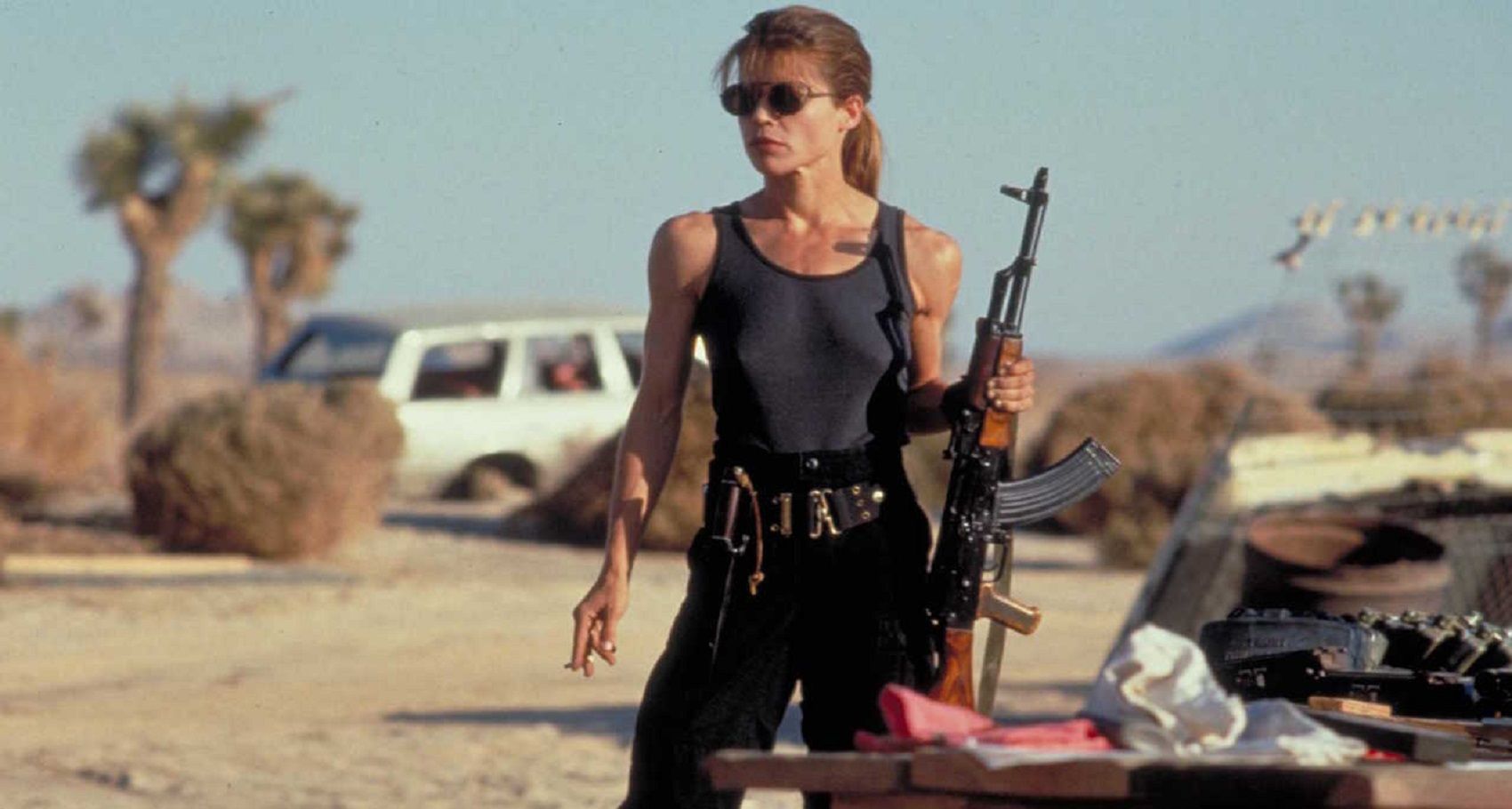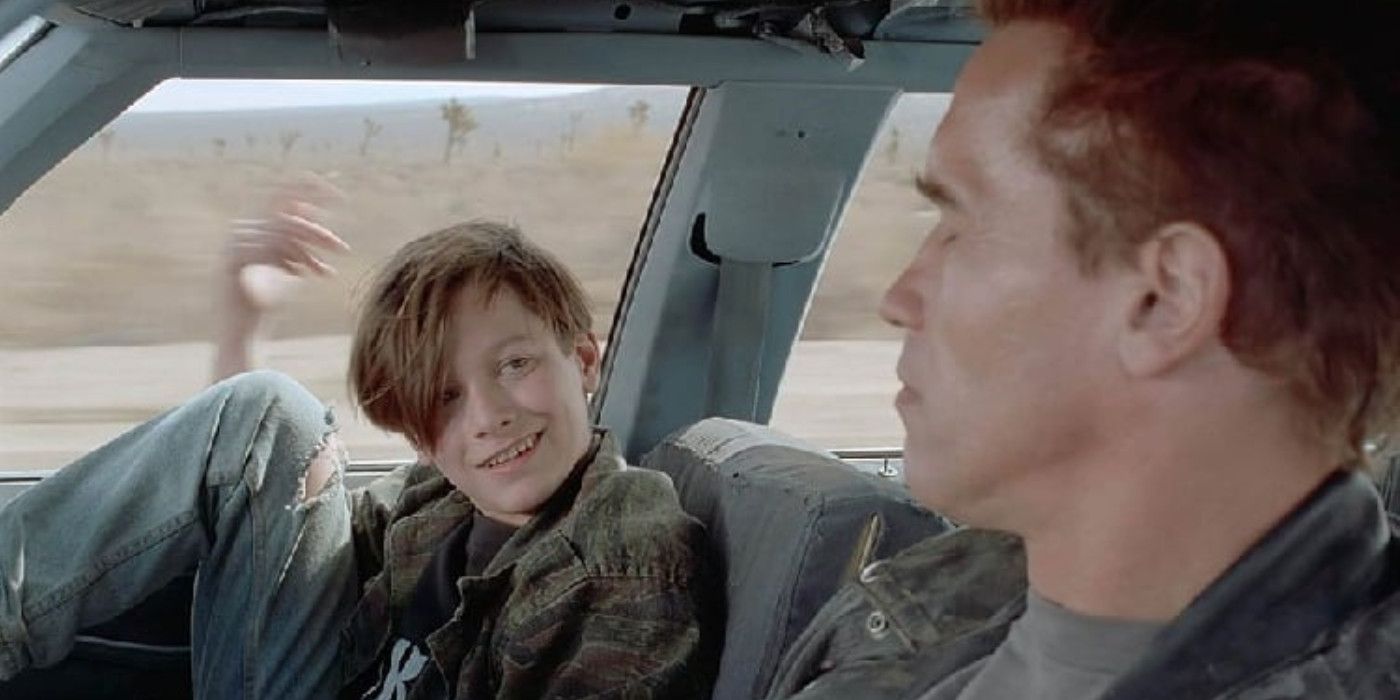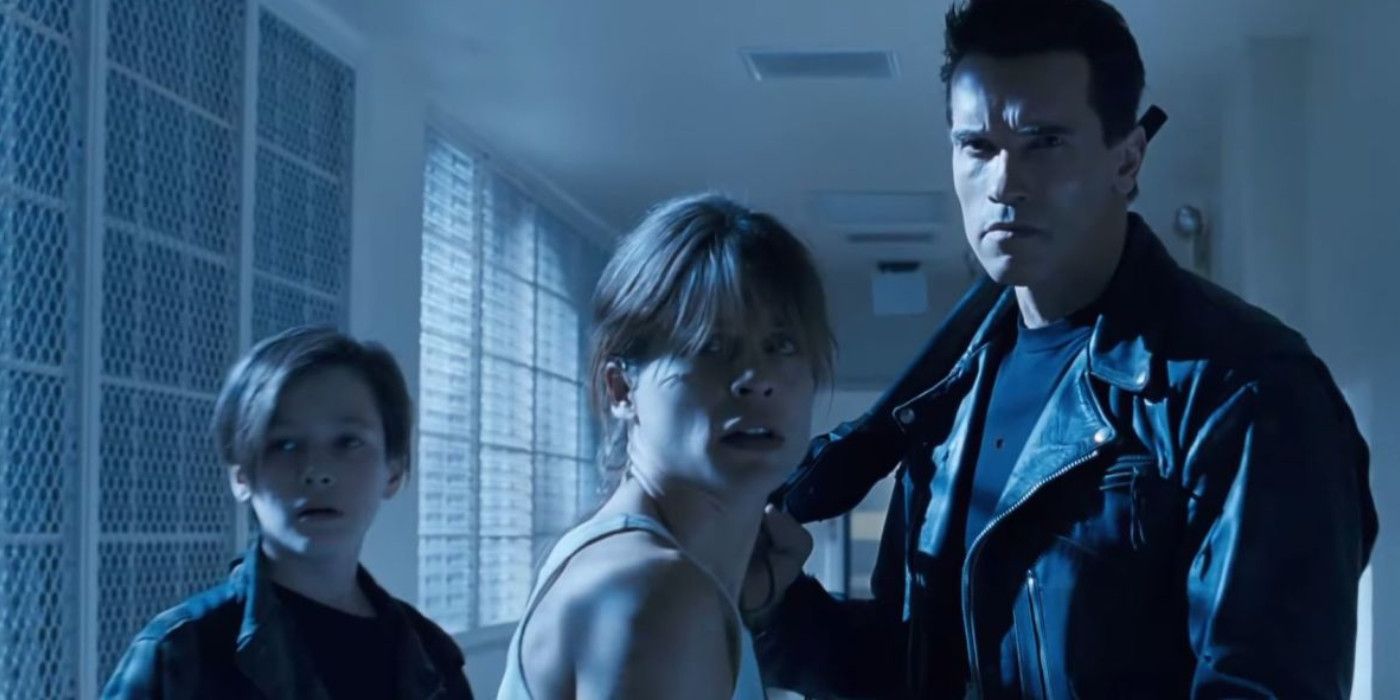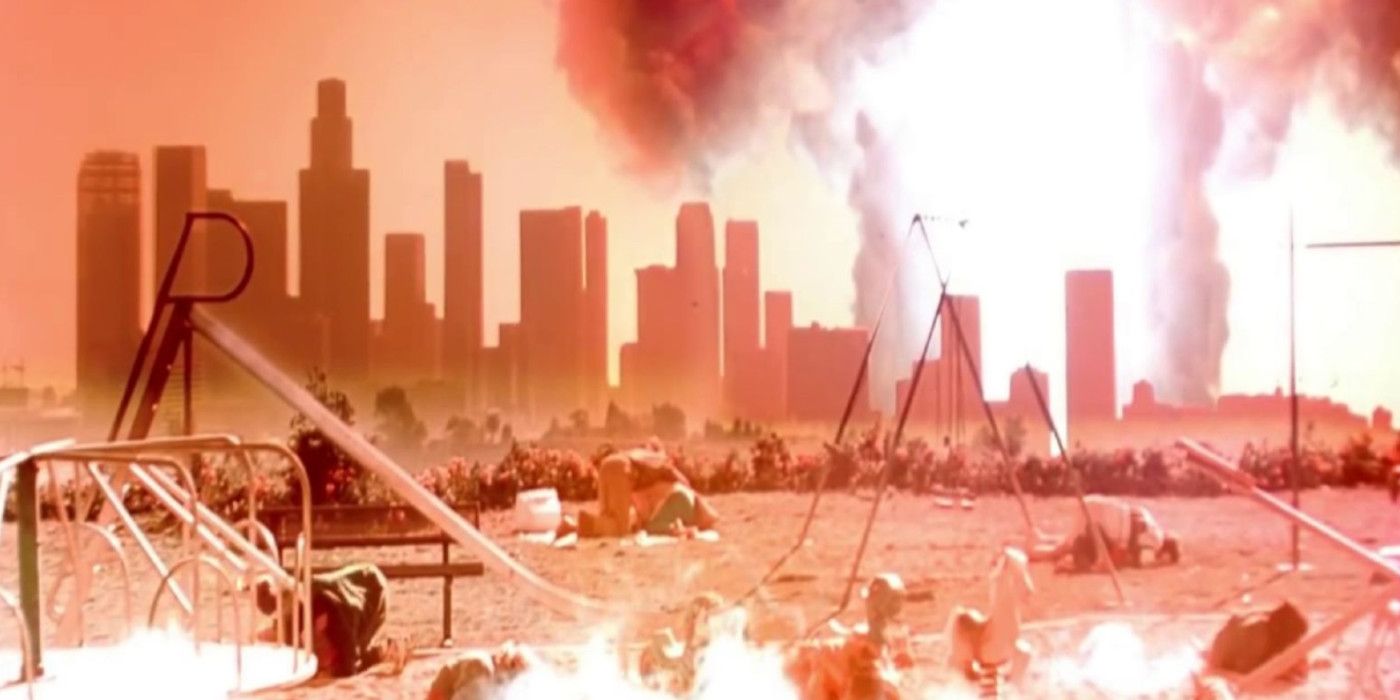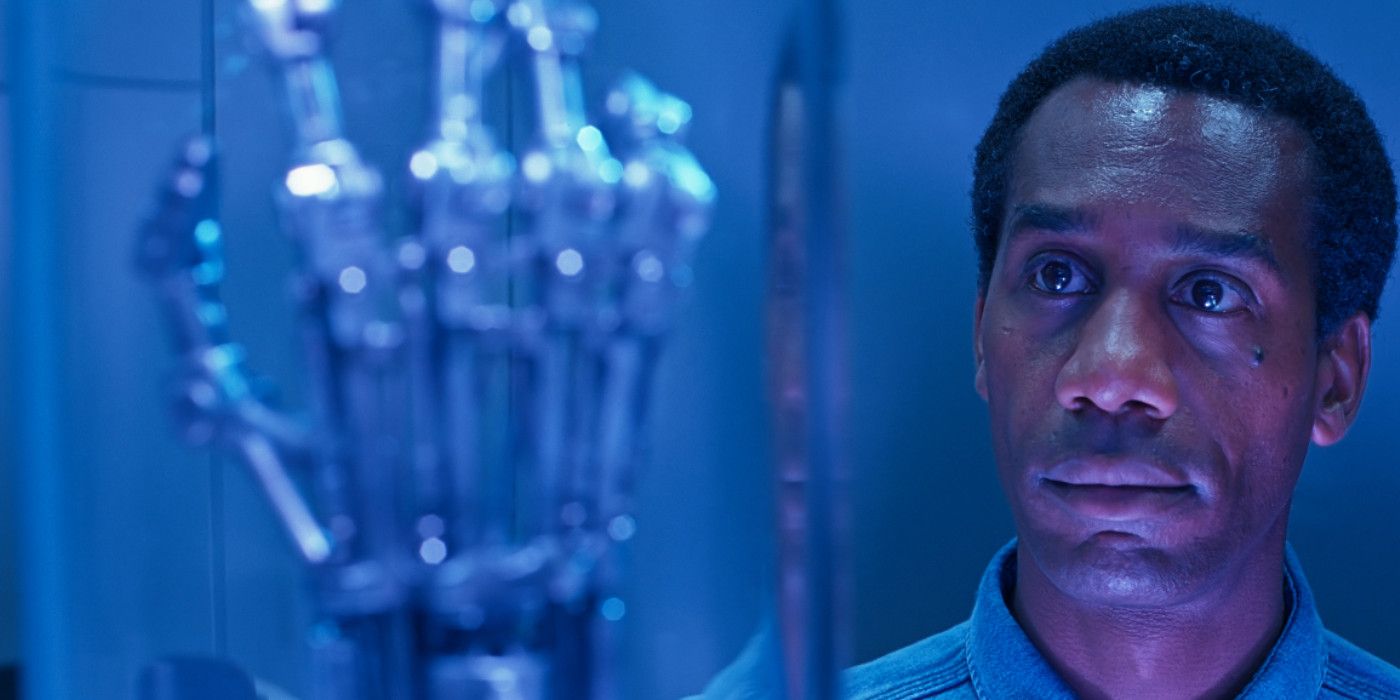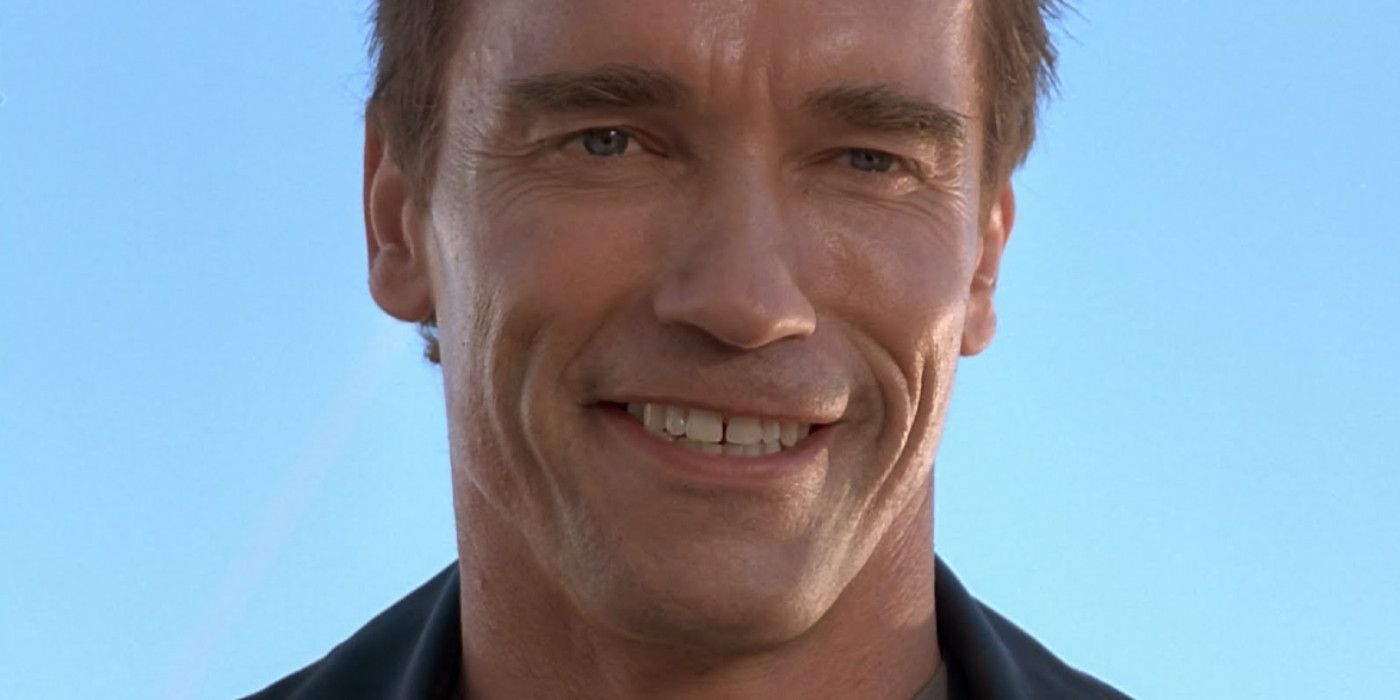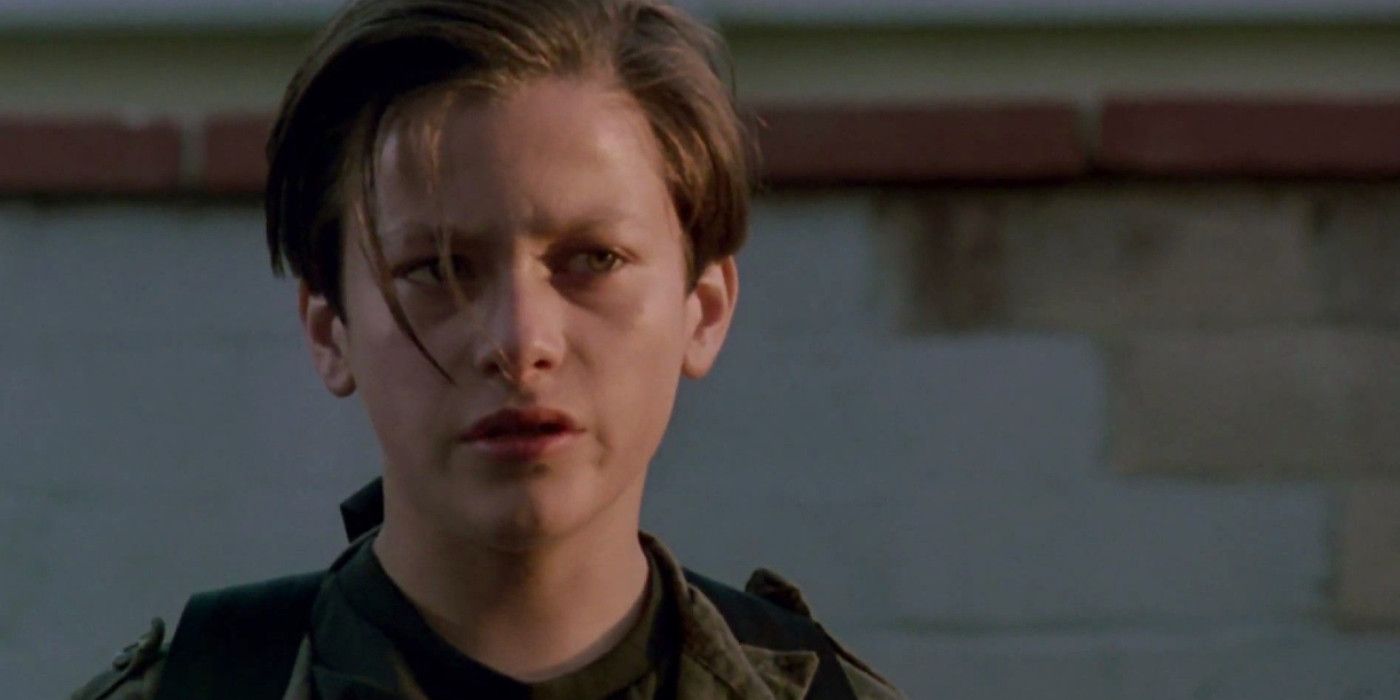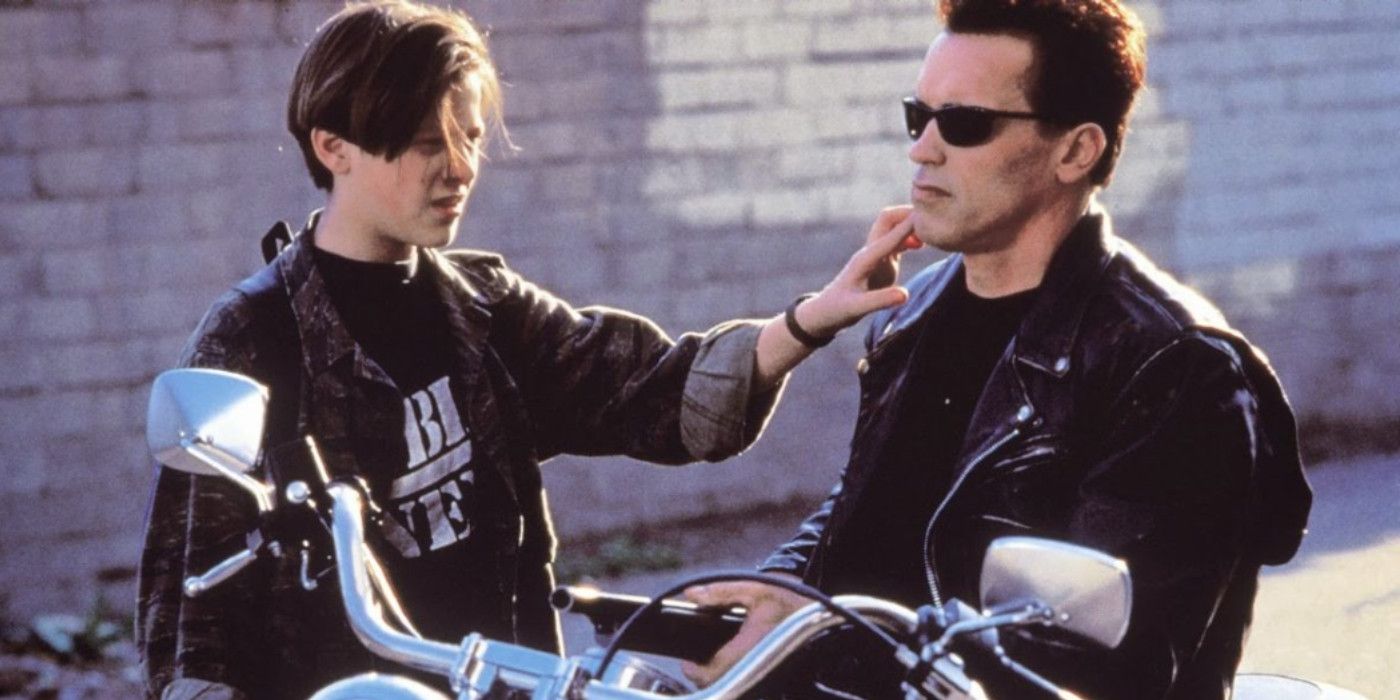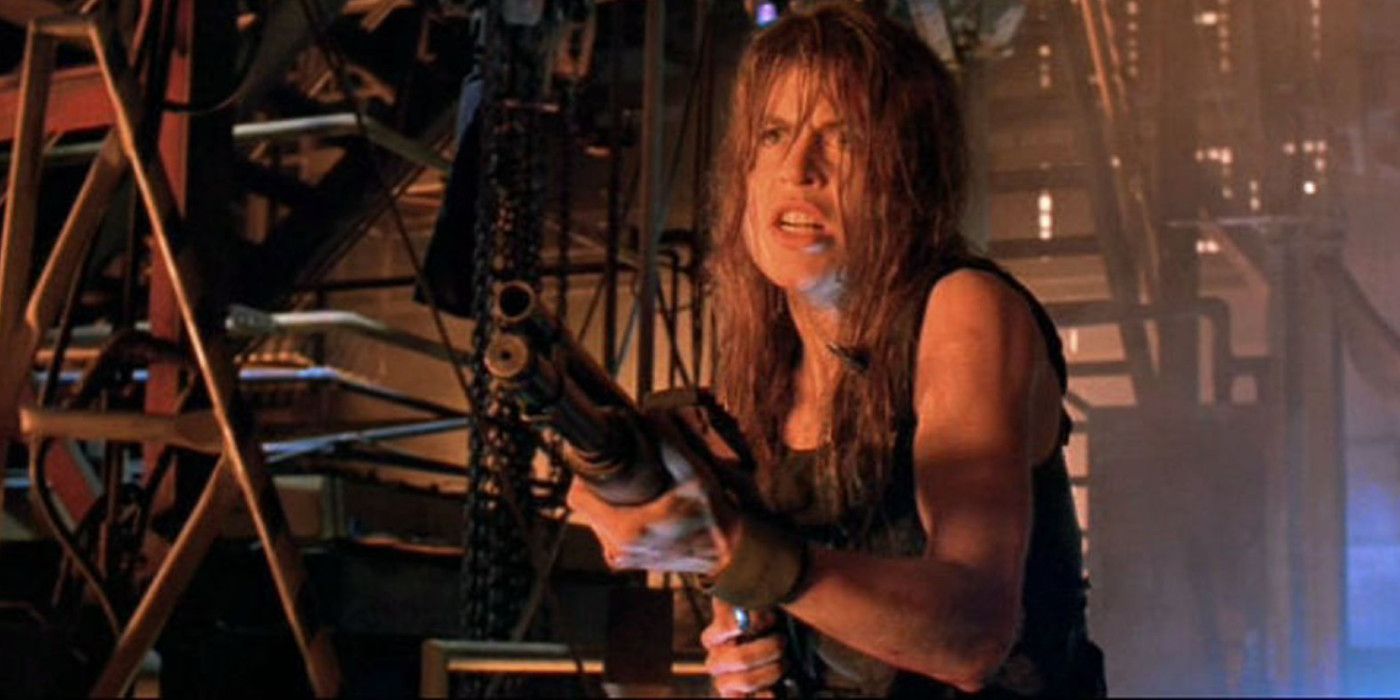When it comes to action movie sequels, nothing can beat Terminator 2: Judgment Day. James Cameron’s relentless action movie that would go on to define Arnold Schwarzenegger’s career was already great, but his follow-up somehow managed to surpass it. Today, Judgment Day or T2 to some is still revered as a classic in both the Action and Science-Fiction genres.
Released in 1991 but made in the tail end of ‘80s culture, it shouldn’t be too surprising that some parts of Judgment Day didn’t get better with time. This doesn’t make the first Terminator sequel bad by any standard, but it does show how much of a product of its time that even a timeless action movie can be. Here are 10 things from Terminator 2: Judgment Day that didn’t age well.
Hasta La Vista, Baby
Bored of the T-800’s robotic responses, John decides to make it hip and cool by teaching it some slang. His most memorable lesson is the one about catchphrases, which ends with the Terminator saying “Hasta la vista, baby.”
Even in the movie’s version of 1995 and in the actual year Judgment Day was released in, saying “Hasta la vista, baby” or “No problemo” out loud is as gnarly as calling someone a “Jabroni” during an actual conversation. Catchphrases like these are undeniable artifacts of an old decade, and it’s for that exact reason why they should stay there.
The Sequel’s Formula
Judgment Day’s story about a robot protector defending humanity’s last hope is so great that all succeeding Terminator properties copied it. The idea of a time-traveling Terminator fighting an advanced shapeshifting one is a cliché of its own in Terminator media, and it only worsened with each installment.
From The Sarah Connor Chronicles to even Dark Fate, this storyline is reduced into a basic checklist for sequels to lazily follow. This came to a head in Terminator Genisys, where a T-800 that aged like the real-life Schwarzenegger protects a young Sarah Connor. She also calls him “Pops.”
The Ending
As popular as The Terminator is, it’s obvious that it wasn’t meant to be a franchise. This is clearest in Judgment Day’s ending, where Sarah closes the story by accepting humanity’s free but uncertain future.
The haunting yet emotionally satisfying vibe of her concluding speech is lost in the sequels that keep resurrecting Judgment Day, making humanity’s extinction inevitable. In hindsight, Sarah was too optimistic since the sequels render Judgment Day’s poignant sacrifices and the deleted happy ending pointless. Thankfully, the upcoming Terminator: Dark Fate will ignore everything after the second movie.
Judgment Day
Though Judgment Day was released in the year the Cold War ended, it was made when tensions were still high. This is most evident in the eponymous Judgment Day, which is a nuclear Holocaust triggered by SkyNet the moment it becomes sentient.
While the ramifications of Cold War-era politics are still felt today and nukes are still around, the specific fear of a global nuclear war is something emblematic of the late ‘80s. Today, Judgment Day won’t be brought about by machines with launch codes, but by humanity’s hubris and a pissed off Mother Nature.
Technophobia
As with many Sci-Fi movies of the time, Judgment Day asks if mankind has gone too far in its pursuit of science. This is because SkyNet, the Artificial Intelligence that kills humanity, was in fact created by men.
Made during a seemingly endless global arms race, it’s appropriate that Judgment Day embodied a mistrust of large-scale technological advancements. Today, technology has become ubiquitous and its applications aren’t limited to the military. Technophobia still exists especially in light of intrusive hacking and social media, but it’s fueled by different concerns when compared to Judgment Day’s fears.
The T-800
Thanks to Judgment Day’s undying popularity, it’s hard to remember that the T-800 being John’s protector was actually a surprise twist. This solidified Schwarzenegger’s place in pop culture fame as an action hero, but it also came at the expense of his breakout role’s fearful aura.
Originally, the T-800 was a mechanized monstrosity from a dark future that wanted to murder a waitress. This unstoppable killer – based on James Cameron’s actual nightmares – was all but forgotten as the Terminator movies went on, with the T-800’s friendly second incarnation overshadowing what it once was.
John Connor
A part of The Terminator fanbase derides Judgment Day for being a PG-rated movie, and John Connor embodies this complaint perfectly. Not only is he a kid, but he’s the obnoxious kind of precocious kid that’s become a staple of corny ‘90s action movies aimed at families.
When he’s not making smarmy wise cracks, John teaches the T-800 how to say the most radical slang. To be fair, John did what any 10-year old from that time period would do if they had a killer robot for a bodyguard, which is precisely why his character didn’t age well.
John and the T-800
John and the T-800 provide Judgment Day’s emotional backbone, with their sincere bond tearfully ending when John’s unlikely father figure sacrifices himself for humanity’s future. Minus some key scenes, their relationship is also corny as hell.
This doesn’t mean that John and the T-800 hanging out lost its appeal, but the moments they share – such as John teaching a killer robot that killing is bad – can be cheesy and saccharine. There’s a reason why this only worked in 1991. Specifically, Terminator 3: Rise of the Machines repeated their tandem, but to little success.
Sarah Connor The Doomsday Nut
Knowing her son would lead humanity against the machines, Sarah trains herself and John in combat. This, however, creates a wide emotional gap between her and John that’s only closed when the movie ends.
To the sequel’s credit, this side of Sarah is depicted negatively. It only aged poorly in the following Terminator stories, where Sarah never completely got over her paranoia with her isolationist behavior being proven right. This was shown in Rise of the Machines with her coffin of guns and in Dark Fate’s teasers, where she’s as reclusive as Laurie Strode was in the new Halloween.
Sarah Connor
After surviving the first movie’s events, Sarah became a cold gun-slinging survivalist who thinks emotions weaken people, demanding that everyone toughen up. In short, she threw aside traits that are commonly dismissed for being weak and effeminate in favor of more aggressive masculine behavior.
Cameron’s depiction of female empowerment through Sarah may be well-meaning but it’s juvenile by today’s standards. Essentially, all he did was take a generic ‘90s badass and replace their testosterone with estrogen. His take on feminism also got him in hot water after he lambasted Wonder Woman for lacking Sarah’s grit and damage.

